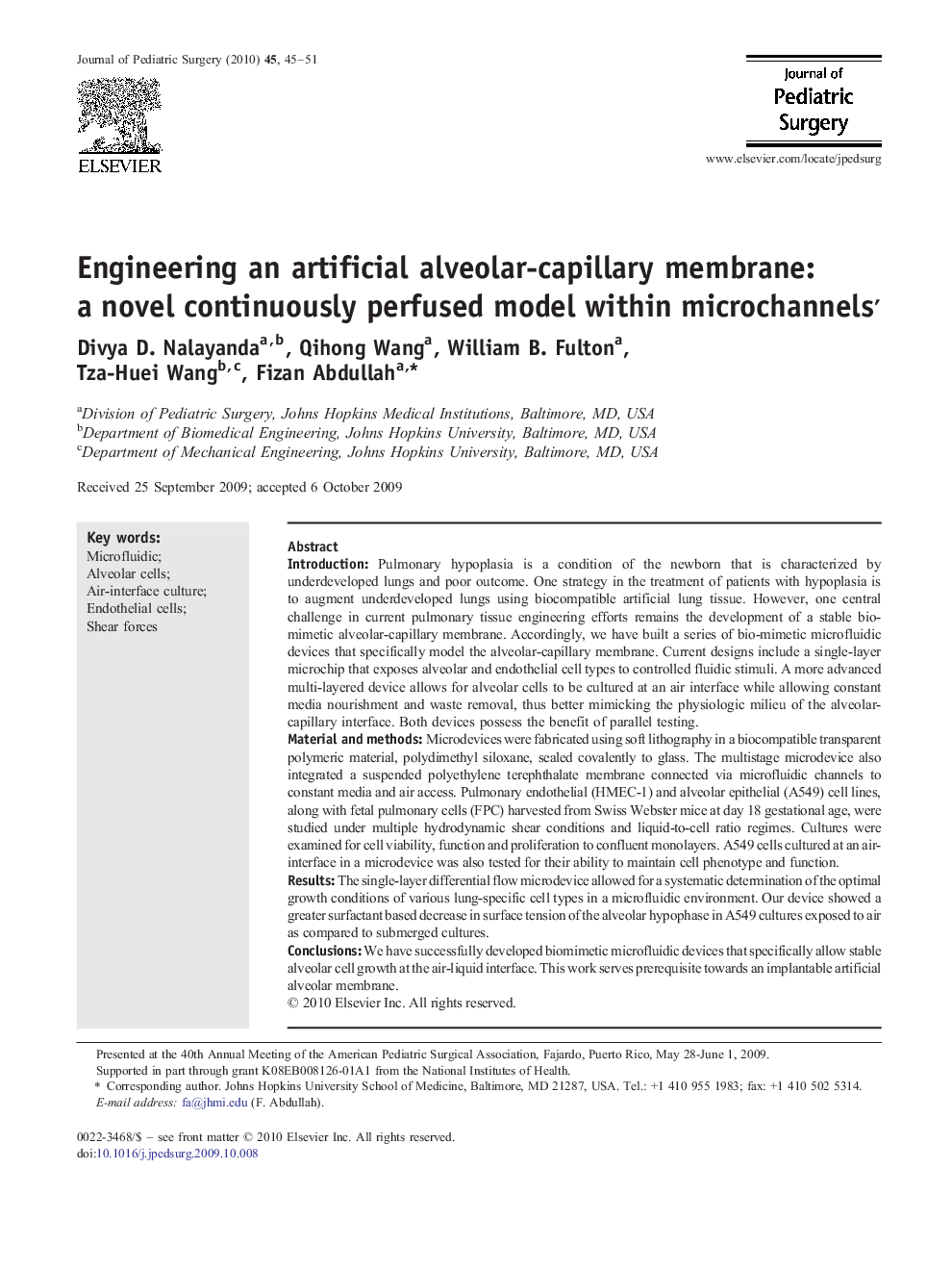| Article ID | Journal | Published Year | Pages | File Type |
|---|---|---|---|---|
| 4158790 | Journal of Pediatric Surgery | 2010 | 7 Pages |
IntroductionPulmonary hypoplasia is a condition of the newborn that is characterized by underdeveloped lungs and poor outcome. One strategy in the treatment of patients with hypoplasia is to augment underdeveloped lungs using biocompatible artificial lung tissue. However, one central challenge in current pulmonary tissue engineering efforts remains the development of a stable bio-mimetic alveolar-capillary membrane. Accordingly, we have built a series of bio-mimetic microfluidic devices that specifically model the alveolar-capillary membrane. Current designs include a single-layer microchip that exposes alveolar and endothelial cell types to controlled fluidic stimuli. A more advanced multi-layered device allows for alveolar cells to be cultured at an air interface while allowing constant media nourishment and waste removal, thus better mimicking the physiologic milieu of the alveolar-capillary interface. Both devices possess the benefit of parallel testing.Material and methodsMicrodevices were fabricated using soft lithography in a biocompatible transparent polymeric material, polydimethyl siloxane, sealed covalently to glass. The multistage microdevice also integrated a suspended polyethylene terephthalate membrane connected via microfluidic channels to constant media and air access. Pulmonary endothelial (HMEC-1) and alveolar epithelial (A549) cell lines, along with fetal pulmonary cells (FPC) harvested from Swiss Webster mice at day 18 gestational age, were studied under multiple hydrodynamic shear conditions and liquid-to-cell ratio regimes. Cultures were examined for cell viability, function and proliferation to confluent monolayers. A549 cells cultured at an air-interface in a microdevice was also tested for their ability to maintain cell phenotype and function.ResultsThe single-layer differential flow microdevice allowed for a systematic determination of the optimal growth conditions of various lung-specific cell types in a microfluidic environment. Our device showed a greater surfactant based decrease in surface tension of the alveolar hypophase in A549 cultures exposed to air as compared to submerged cultures.ConclusionsWe have successfully developed biomimetic microfluidic devices that specifically allow stable alveolar cell growth at the air-liquid interface. This work serves prerequisite towards an implantable artificial alveolar membrane.
